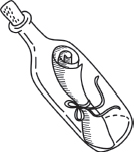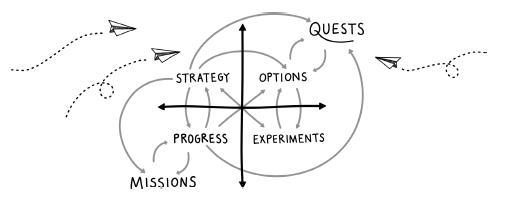
11 Planning to Fail
Before we get carried away, it's worth remembering that all phases of the Quest-Augmented Strategy model ought to happen concurrently. Futures are continually monitored, informing the experiments that matter. Unanticipated results from experiments may yield further questions worth exploring (meaning things flow between the four quadrants of the Quest-Augmented Strategy model — refer to figure 5.1 on p. 60). Likewise, the resulting intelligence from experiments informs strategic decision-making, and vice versa.[1]
All of the elements of Quest-Augmented Strategy interact with each other (see figure 11.1, overleaf). It's not a linear, step-by-step process.

Figure 11.1: The non-linear flow of Quest-Augmented Strategy
One thing that is consistent with this new way of working is failure.
But many organisations are woeful at handling failure. Failure becomes personalised, and career-limiting. In some cultures, it carries a stigma — ‘Two bad quarters and you're out!' The existing feedback loops only serve to reinforce compliance and non-thinking conformity. Any mistakes that do happen are quickly and quietly covered up — preventing the opportunity for shared learning. Curiosity is quashed — staff are simply there to slot into their cubicles and do their jobs. ...
Get How To Lead A Quest now with the O’Reilly learning platform.
O’Reilly members experience books, live events, courses curated by job role, and more from O’Reilly and nearly 200 top publishers.

